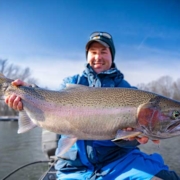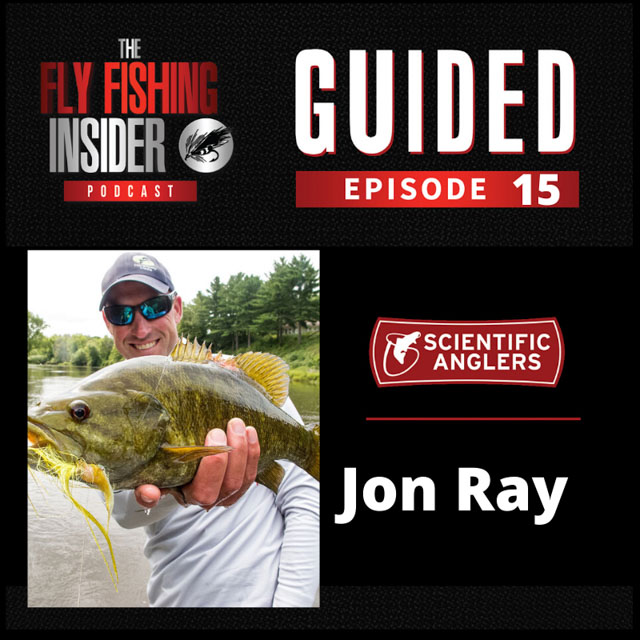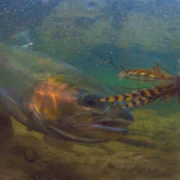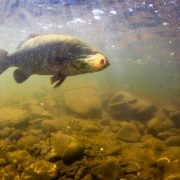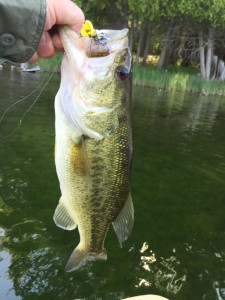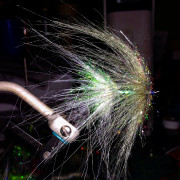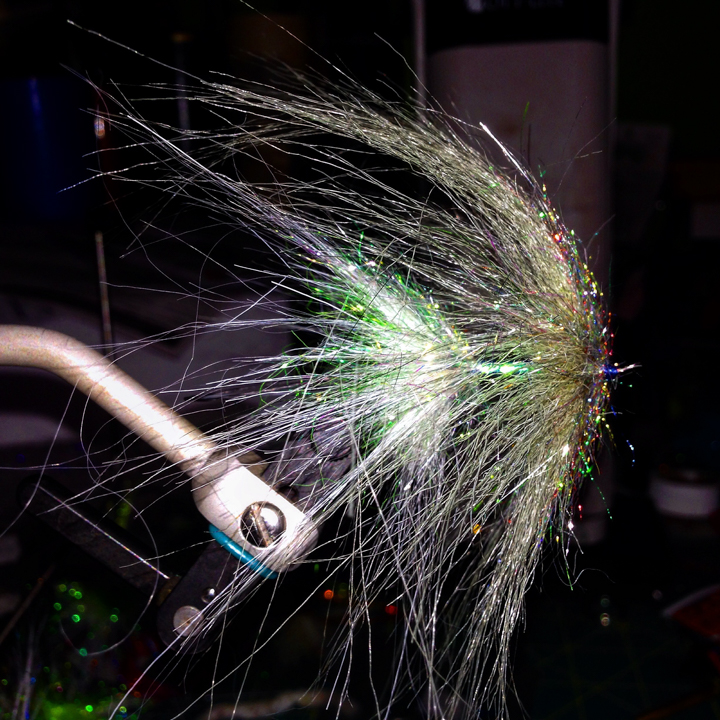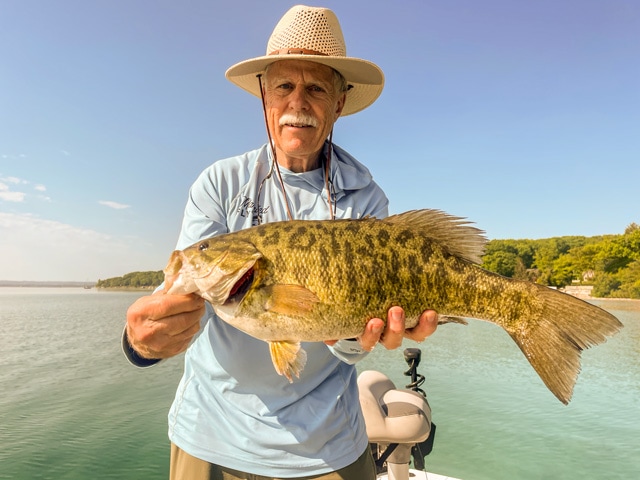Spring Steelhead and What Changed
Environment or Angling
What is it that feels like its changing? Is the environment around me changing, or is it my angling mindset? I remember back 20-25 years ago fishing for Spring Steelhead meant an April float down the Pere Marquette River. Now its seems Spring Steelhead for an angler/guide means a shift to fishing more in February and early March. What has changed? Why is that I’m more excited to chase Smallmouth Bass in April more than Steelhead nowadays? Why is it that my February steelhead fishing is as good as my November adventures if not better? I think we can all agree the environment is changing on many levels and Steelhead fishing in Northern Michigan is no different.
Spring Steelhead
To be completely honest, Spring Steelhead fishing has shifted ahead of what we considered to be our normal timing. The Spring Steelhead calendar has been pushing forward, simply put, February is becoming the new March. This isn’t a one year trend either! For the past couple of years fishing in February has been really good. I would argue that February has been as good as our best October/November days. There are a number of reasons causing this current trend.
First of all, this is the lowest angling pressure during the steelhead calendar (October to April). Most of the popular boat ramps only have a trailer or two on most days. During the weekdays it is usually light traffic and even on most weekends you normally only see a few other anglers in the know.
Second, we have a solid population of fall and winter fish already in the river along with some early Spring Steelhead pushing in from Lake Michigan. Spring Steelhead are now starting to push in February, a common occurrence over the last few years. This year was no different and we saw really good numbers of steelhead throughout the months of January and February. Just like last few years, February is now setting up like March used to when I started guiding back in 2001.
I used to associate the start of the Steelhead run with the popular Warren Fly Fishing Show during the second week of March. I used to always hate working that show as I knew the fishing was so good on my home waters. Now I know that by Valentines day I need to be ready, almost a full month ahead of schedule.
Environment
The third reason for the change is linked directly to environmental conditions. Our winters have been milder by nature and not as harsh over the past 8-10 years. True, this winter saw plenty of cold days, but with far less snowpack than we are used to receiving. We now seem to have a roller coaster of temperature swings with small to big warmups. These warmups will bump flows and trigger runs of fish to come home early. The environment is beginning to show signs earlier that she is ready for our Steelhead to begin their trek home to their spawning grounds.
Other environmental cues also start speaking to us earlier in February. As the winter season has become less severe we are seeing blue birds and sand-hill cranes migrating back sooner. This past week we had little Black Stones fluttering on the surface on Feb 27th as water temps were peaking at 38 degrees on some smaller streams. The calendar is shifting and as anglers we need to take notice. If you enjoy steelhead fishing take a good look at your calendar and start taking notes because change is happening.
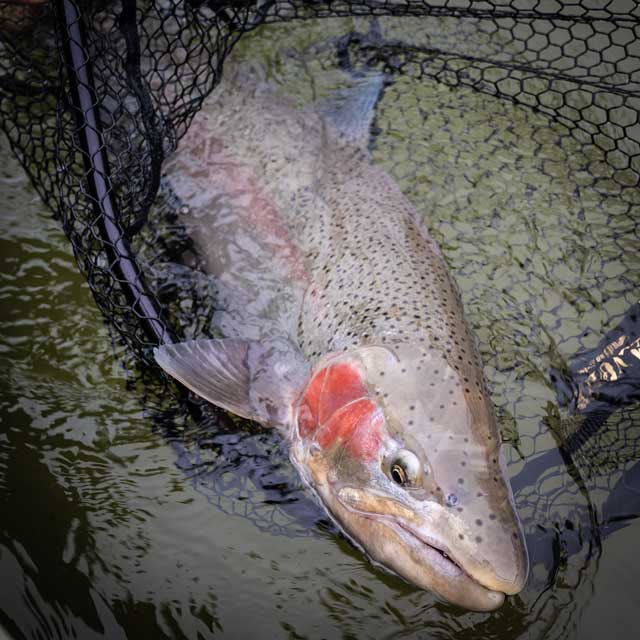
March
March fishing is still one of the safest months for Spring Steelhead fishing as you are less likely to get weathered out. This is the biggest negative for February, however fewer anglers on the water can make up for temperamental weather. Even though our winters seem milder, we can and will get long cold spells. If you can time the weather breaks and have flexibility in your schedule, February has proven to boast some solid Steelhead fishing.
Even though March can offer better weather and a good number of steelhead in pre-spawn mode, the number of anglers is increasing. It’s really a simple mathematical equation and fish divided by more anglers equals less of a shared opportunity.
Top 3
Can steelhead still be caught in April? Yes, absolutely! That is not what I’m trying to say here. As anglers we sometimes get stuck doing what we used to do and not what we should. I have enjoyed fun fishing for February steelhead the last few years and I need to share with our audience that this has become one of the top 3 months for Steelhead fishing in Michigan.
Applying the same mathematical principle leads me to this conclusion. The Fall Steelhead fishing is truly fantastic and will always lead the way for steelhead fishing for me. These fish are amazing and water temperature gives them the ability to do things I just don’t see with other Great Lakes fish. However, for pure numbers of Steelhead hooked in a single day, it’s really getting hard for us to beat February.
With Fall and Winter Steelhead in pre-spawn mode, Steelhead are more eager to feed. With fresh Spring run fish just showing up the Manistee River, Pere Marquette, and other Norther Michigan streams are at there peak spring-run numbers earlier in my opinion.
Streamer Season
What other trends have I noticed when I start thinking back on my angling career? One thing that also stands out is the big differences in the Spring streamer game. The Spring streamer season is for those anglers that want no part of the Spring Steelhead gong show. Streamer fishing gives an angler that escape. Now, just like with our Spring Steelhead, we are targeting Trout, Northern Pike, and Smallmouth Bass much earlier than in years past. This past April in 2021 opened my eyes to what the possibilities are.
On a side note, one of the best things that happened two years ago at Mangled Fly was the opportunity to work closer with Jeff Topp and Ed McCoy. The ability to learn more from each other about tactics/techniques and fly vs lure has expanded our guiding in new directions. The angling opportunities in April are now more diverse than just Spring Steelhead and I for one am all for it.
What I’m really excited about for this upcoming year is taking what we learned from last season and applying it to new waters. With so many of my past streamer trips painted into a trout corner, no matter what you did on some days, it was going to be a tough day on the trout stream. However, we now have a back up plan. No more sunny day April Trout-less days!
Trout
Trout fishing in April is still a very realistic option to pursue most days. However, what do you do during a cold front, especially one with bright sunny skies? It’s not to say you could’t catch the fish of a lifetime, but let’s be honest the sun is not going to help your chances. Having a second option to chase with streamers makes more sense and allows us to focus our Trout efforts at times where success is more likely. I will gladly fish for Trout with streamers on cloudy days knowing my chances are going to be much better.
What are the options now you say? How about targeting Spring Pre-spawn Smallmouth Bass as a viable option. These fish are a super fun and really don’t care if the sun is shining all day. Having diverse fishing opportunities is important for success. Conditions are never really consistent and during the Spring even less so.
Smallmouth Bass
One of the highlights of a tough April steelhead run was taking time off to learn a few sections of the river for different species. The 2021 Spring Steelhead season was one of the warmest on record. Looking back we had river temps warming up at a record pace. As Steelhead to hit their preferred spawning temperatures weeks ahead of schedule we were forced to try and figure out a different program. Let me tell you, Spring Pre-spawn Smallmouth Bass are a lot of fun! The Smallmouth Bass in April tend to be bigger on average and very, very eager to take both Fly and Lure.
The big mature Smallmouth are migrating in from the lakes on their way to their spawning grounds. Smallmouth Bass spawn when water temperatures reach 60 to 63 degrees. We were starting to find these fish eager to crush flies and lures in the high 40’s. We had success over varying conditions and these fish were still weeks away from spawning, making them super aggressive.
Tactics
One tactic that I personally spent some time on was the lure fishing. A lure that changed the way I used to think was the Z-Man Jerk Shad. Fishing this lure over several days opened up my eyes on how to properly fish a Jerk Changer and how to better imitate a dying minnow presentation. This lure changed the way I tie flies and how I fished them. I’ve always prided myself in applying lure fishing tactics to my fly game in an attempt to get better. Now some of you might not have heard of either these two styles, but if you’re into fishing for predatory game fish this style of fishing is so important.
This method of fishing also paved the way to what Ed and I did later in the year with Muskie in the fall. Watching a Muskie interact with a Jerk Changer will change your world. If I had not spent time with the Z-Man Jerk Shad I’m not sure I would know how to properly teach and explain how to present your fly (Jerk Changer) to Smallmouth Bass, Northern Pike, Brown Trout, and Muskie.
Rods and Reels
When fishing for Spring Smallmouth Bass in early spring we tend to beef up our rods just bit from our summer program. One observation was the Spring Pre-spawn Smallmouth Bass really keyed in on bigger baitfish patterns. A 7wt or 8wt rods teamed up with a slow sinking line such as the Scientific Anglers Triple Density I23 were most commonly used. The leaders can be heavy this time of year as the water is usually a little murky or stained. It was NOT uncommon for us to run 16 pound fluorocarbon and even a steel leader.
Jeff Topp, once again our resident lure professional, recommends spinning rods in the 7-7.5 foot range with Medium Light to Medium Heavy power that can handle lures in the 3/16-1/2oz range. Choose your rods based upon the depth and cover type you are fishing. Jeff’s preferred line setup for river Smallmouth uses 15 or 20 lb braid for the mainline with 2-3 feet of 15 lb fluorocarbon as a leader.
Better Angler
I have for years felt like fishing for Smallmouth Bass make you a better angler. When Kevin Feenstra and I did our Smallmouth video together it really opened my eyes to the benefits of Crossover species like Smallmouth Bass. One of our mantras at Mangled Fly is teaching you how to be a better angler. Smallmouth Bass will not only teach you to be better angler, but they will give you more opportunities to learn from.
Crossover species allow you to work on proper streamer presentations that are also effective for trout
by Ed McCoy
Too often in the spring we are faced with bright and sunny conditions. How do you become better streamer angler with fewer chances? You need to catch fish. You also need to practice setting the hook and learning how to fish your fly (ie Jerk Changer) at the right speed. As streamer anglers with a fly, we always have slack in our presentation which can cause failure. There are plenty of times this has caused the angler to say, “I didn’t feel it” on the eat.
Crosstraining
To be a good angler you need to practice and learn from your opportunities. The same holds true for lure fisherman. Learning to fish your lure at the correct speed and understanding what your lure is doing under water is no different. Sunny day smallmouth bass trips allow you to practice all of these skills. Being adaptable as an angler will only maximize your Brown Trout chances on the next cloudy day.
Fishing both a fly and a lure has made me a better angler by far. My understanding of gear fishing has made me a better fly angler and my understanding of fly fishing has made me a better lure fishermen.
by Jeff Topp
Smallmouth Bass, unlike trout, are not shy when it comes to sunny days. Sometimes in the spring, Bass can be found out sunning themselves. They are feasting on the many different minnows that are also migrating to spawn. Gobies, Chubs, and many other baitfish, will provide the Smallmouth Bass with numerous prey choices. Smallmouth are not afraid of the sun and always appear to be hungry. This makes them a perfect teaching tool for anglers of all skill levels. No matter if you’re fishing a fly or a lure, Smallmouth Bass are the perfect crossover species.
Closing
I’m not trying to paint a picture of doom and gloom for those that love to fish in April for Steelhead. I am just trying to bring some much needed attention to what trends we have been seeing over the years. I truly understand February Steelhead fishing is not for everyone. I’m fine with that and I know I will continue to enjoy the fishing as much as I can over the next few seasons. With the changing landscape regarding Spring Steelhead, and Steelhead in general, the Great Lakes populations provide an exciting opportunity.
However, as things change, new options become available and our angling experiences begin evolving. In Michigan we are very blessed to have so much water to fish and a diversity of choices within. As a guide and avid angler, I am always trying to get better and its my job to make you a better angler as well. As an angling community, learning more about what other fishing options are available, should always be one of our goals. I hope everyone enjoys your spring season and good luck on the water no matter what fish you’re chasing.
Jon Ray

